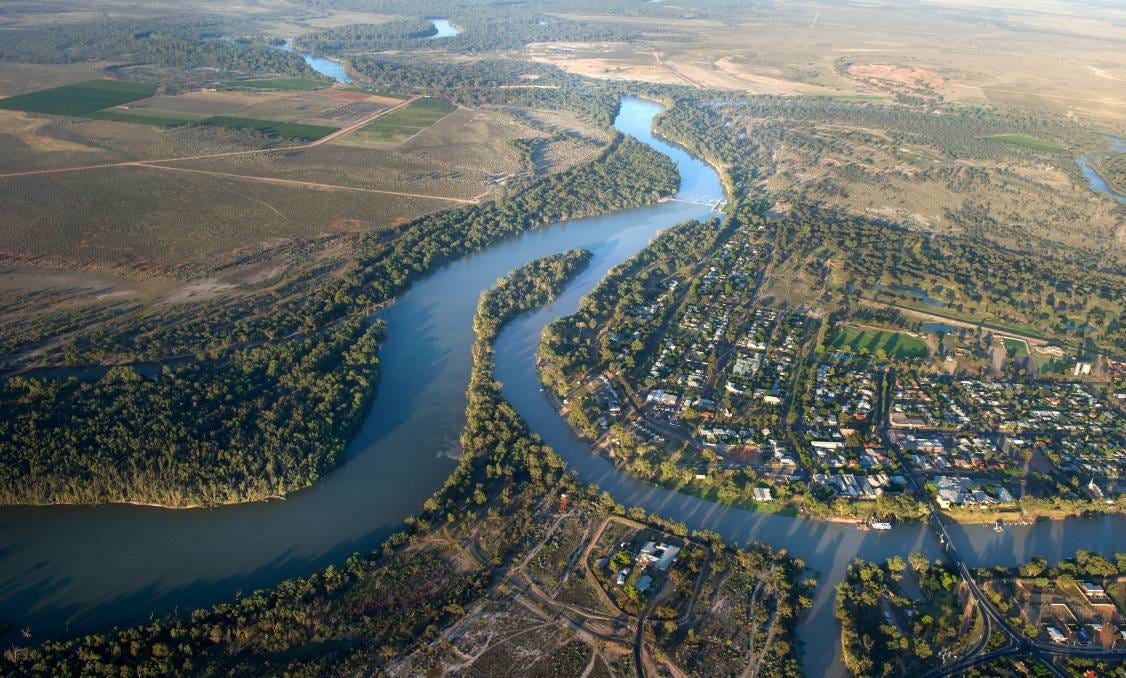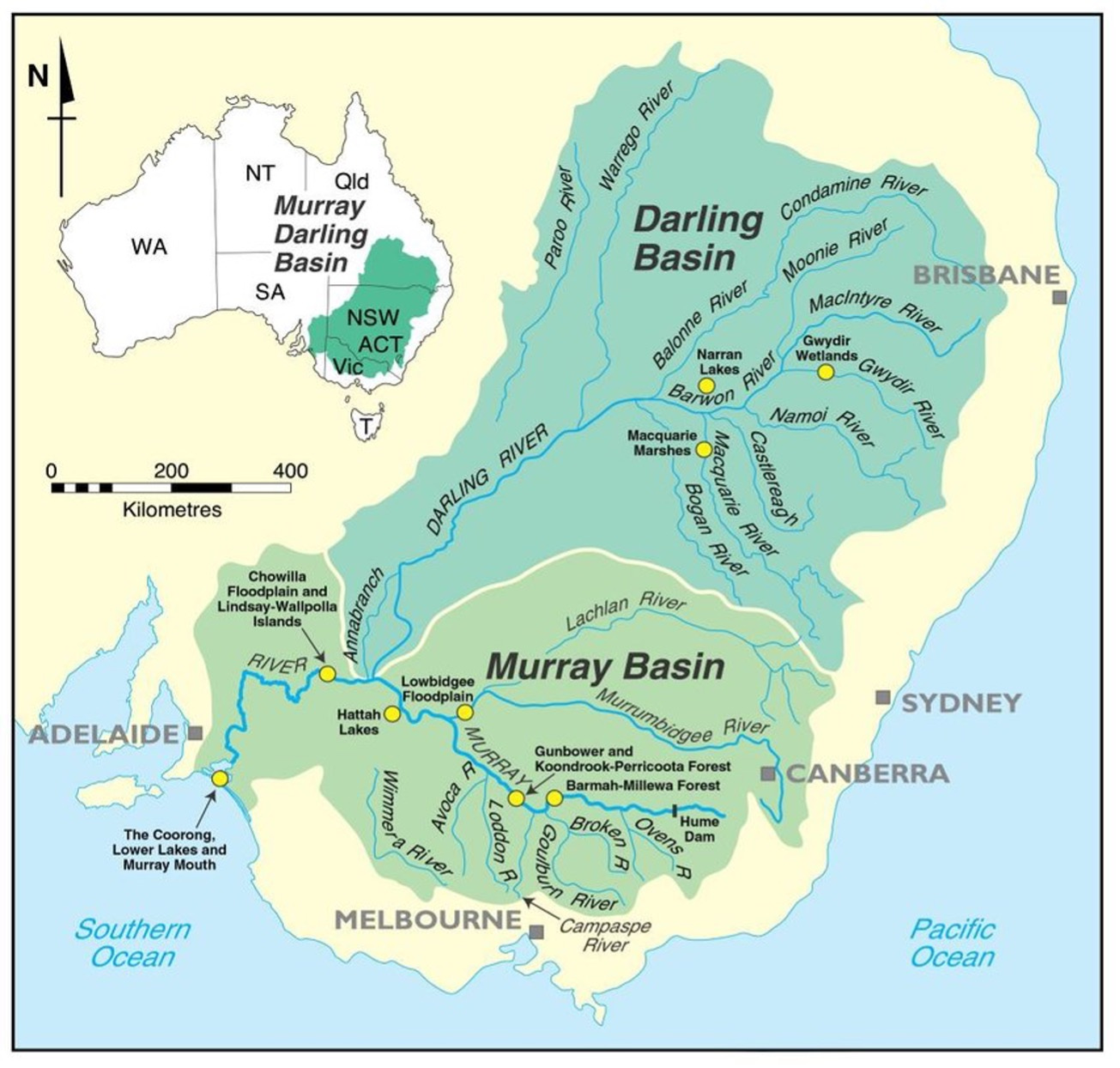
Most Americans have never heard of the Murray-Darling River system. It is the primary source of irrigation water in Australia. It has been under intense pressure for many years, some predating climate change. It is very much a mirror of the issues around Colorado River distribution.
Where is the Murray-Darling River Basin?
Australia is a massive country that is primarily dry, famously for its outback and western deserts. A band of mountains called the Great Dividing Range follows the eastern coastline, preventing much of the rainfall and wind from reaching the interior. The basins the river system drains sees very little rain in much of the system. Like many rivers in the far west, the river swells after winter rains and some snow. By mid-summer, the rivers are down to an average of 30% of the flow of the Murray. The Darling and the Lachlan River basins will often run dry.
Looking at the map, we can see the natural state of the rivers and basins is variable based on low levels of rain and some snow runoff in the Murray Basin.
Irrigation
These rivers are critical to Australian agriculture, providing irrigation to the farms in the various basins. The amount of water moved is less, but similar to the Colorado River in variability and seasonal systems before looking at the various dams, locks, and weirs. Unimpeded, the Colorado River moves about 16.3 million acre-feet of water, and the Murray–Darling system moves about 10.5 million acre-feet.
Also, like the Colorado River, the Murray–Darling is critical for agriculture. About 83% of the average river slow is diverted for Agriculture (another 5% for other uses). Unfortunately, also like the Colorado River in Arizona, too much of that water is diverted for water-intensive crops like rice and cotton. When the damns and irrigation canals were planned, the water levels were more significant than they are now, which caused a problem when allocating the flow. Dam levels are falling, and water is being wasted in a system where there is little water to begin with.
Droughts have become more frequent, longer lasting, and drier than in the past. In the early 2000s, a drought (called “the big dry”) left farmers without water and dried up the rivers, including the Murray itself.
What are the effects on the country?
Australia has only one sizable agricultural area: this river basin system. In contrast, the United States has many more regions used for agriculture and producing great amounts of crops. These include the Great Plains, the breadbaskets of the Ohio and Upper Mississippi rivers, the Tennessee Valley, and the portions of the South and East that get adequate rainfall. This means that Australia is much more dependent on the Murray-Darling system than the lower 48 States are on any one river, even though the two countries have about the same land area.
Climate Change has only increased the demand for water, whilst lowering the flow of the rivers. Climate change problems are only projected to increase in Australia. If a season of massive rainfall, like the United States, experienced in 2022 / 2023, damage may be much higher in Australia because of the small damn (lock and wier) system.
Large climate swings in Australia are more common than in the United States and will become more severe as the climate changes. The Murray-Darling River System will face more fluctuation year to year on the chief irrigation river in the country.
Conclusion
Water management is critical to the drainage basin’s continued usefulness. This will include building more robust dams, lining irrigation channels, and limiting water-intensive crops like rice. This will mitigate some of the agricultural pressure on the Murray-Darling while still providing water for other crops and urban use. This strikes an agricultural vs. urban conflict over water supplies that will only increase as climate change drives more difficult choices.



